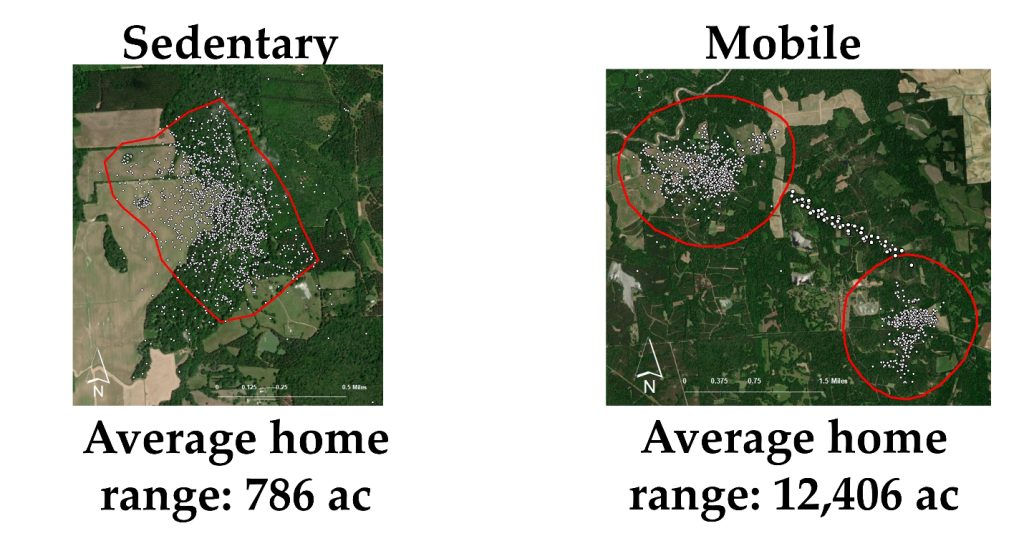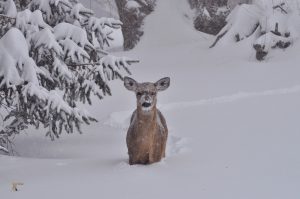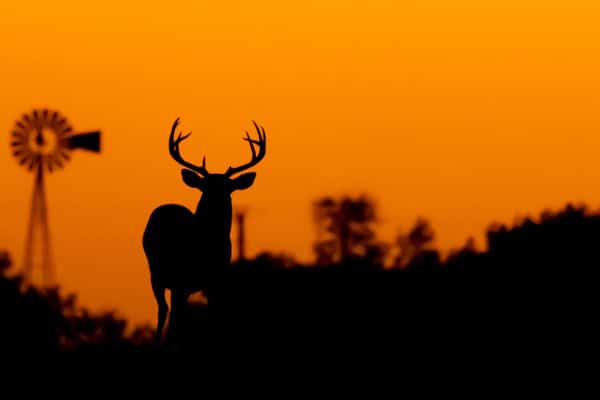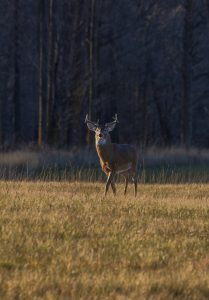You’ve likely heard reports in recent years from the western U.S. about mass die-offs in deer, elk, and pronghorn populations due to severe winter weather. Shouldn’t these animals have mechanisms in place to help them deal with this weather? Yes, and one of those mechanisms is migration. But even animals that embark on yearly migrations have a tough time navigating the landscape when there’s ten plus feet of snowfall.
Why Do Deer Migrate?
The justifications for migration in these wintery landscapes are many. Deep snowfall that buries forage several feet deep and energetically expensive movement through snow are just a couple reasons animals need to migrate. We see similar behaviors, termed “yarding,” from deer in the north-central and in the north-eastern US. Although the distance of migration in these regions often pales in comparison to their western counterparts, they move from summer range to winter range (and back) each year for similar reasons: to balance seasonal resource requirements with resource availability.
In the spring and summer, deer want to spend their time where forage resources are plentiful to support the energetically demanding activities of lactation, antler development, and body growth heading into the next winter. But, in the winter months, these areas might not confer ideal thermal cover or ease of movement through deep snow. So, deer pack up shop and move to a new area, often characterized by dense evergreen tree cover that helps break wind and snow and provides winter foraging opportunities.
What’s the common theme with these migratory behaviors? Severe winter weather! Now, think about the south-eastern US. We don’t have the same dramatic fluctuations in weather or resource availability. Sure, it gets cold in our neck of the woods and we might get a flurry here or there, but our winters are nothing like those of the northern or western US. So, there’s no reason for deer in the Southeast to migrate, right?

The Southern Mobile Buck
We certainly wouldn’t expect deer in our region to migrate given what we know about the environmental and biological drivers of migration. However, we recently conducted a study in the Big Black River region of Mississippi in partnership with Mississippi Department of Wildlife, Fisheries, and Parks where we put GPS collars on over 60 bucks aged 2.5-years-old and older. About 2/3 of those bucks behaved just as we’d expect for deer in the Southeast. They had a single home range of about 800 acres and went on occasional excursions, or short-duration trips, outside their home range boundaries.
 We’ve termed these bucks “sedentary.” The other 1/3 of bucks really surprised us. They displayed migratory behaviors and had seasonal home range segments between which they travelled on a very predictable schedule. These “mobile” bucks’ home ranges averaged over 12,000 acres! On average, seasonal home ranges of the mobile bucks in our study were separated by 4.4 miles, though we had some bucks with home ranges separated by >10 miles and the Mississippi River!
We’ve termed these bucks “sedentary.” The other 1/3 of bucks really surprised us. They displayed migratory behaviors and had seasonal home range segments between which they travelled on a very predictable schedule. These “mobile” bucks’ home ranges averaged over 12,000 acres! On average, seasonal home ranges of the mobile bucks in our study were separated by 4.4 miles, though we had some bucks with home ranges separated by >10 miles and the Mississippi River!
Other mobile bucks had two home ranges separated by just a few hundred yards. When we plot GPS locations of mobile bucks on a map, there’s often a distinct line of GPS points connecting the two home range segments. On average, mobile bucks spent 78 days in a home range segment before traveling back to the other. This is a much shorter interval than we see in other migratory deer populations.
Think back to the examples we discussed earlier of deer in the northern and western US. When the breeding season ends and winter approaches, large herds tend to migrate to winter range all at once. They stay in that range throughout the winter, and once spring approaches they all head back to summer range, almost as if a switch flips at the population level. No such switch seems to exist for deer in our study. Although an individual buck’s movements between seasonal home ranges were remarkably consistent from year to year, there was no clear pattern at the population level, meaning bucks were migrating between their seasonal home ranges at all times of year!
It’s unclear how widespread these behaviors are throughout the Southeast. Although researchers throughout the region have put GPS collars on deer to monitor their movements, our study is one of only two (that we’re aware of) to document anything like this, and the other study documented migratory behavior by a single deer. So, what factors caused deer in our study to migrate, and why haven’t these behaviors been documented across the entire region?
What Caused the Migration?
Short answer, we don’t know for sure. As we discussed earlier, the primary driver of migration is often that resources in one home range at a specific time of year don’t satisfy the animals’ requirements at a different time of year, forcing them to travel back and forth to balance their needs. But in our region, it’s difficult to pinpoint any resource for which this is the case. Our winters are short and mild. Forage resources are distributed relatively evenly across the landscape compared to other regions of the country. Since bucks in our study made these migratory trips at all times of year, it can’t be because of a highly specific seasonal resource constraint. We could go down a rabbit hole on all the potential drivers of this behavior, but at the end of the day, it might simply be that deer are hard-wired to move, explore, and colonize new areas. For whatever reason, about a third of bucks in our study area have got “ramblin’ fever” in their blood.
 How Can Gamekeepers Benefit?
How Can Gamekeepers Benefit?
How can you use this information to increase your success as a gamekeeper? We’ve all heard about, or experienced first-hand, the mystery of the disappearing buck. It goes something like this: “He was on my cameras throughout the summer and into early fall before disappearing for the whole hunting season. I thought he got killed by the neighbor. Then low and behold, he showed back up the following spring!”
This scenario can be frustrating, especially for the small-parcel hunter. There’s no way to prevent deer from doing what their DNA has them wired to do. If he’s got a mobile personality, the perfect food plot won’t keep him on your property. The best sanctuary and cover blocks won’t prevent him from leaving for a couple months. The properties on which the bucks in our study lived are very well-managed: food plots, timber management, high-quality cover, large landholdings, and cooperatives amongst neighbors help these bucks reach their potential in older age classes. Don’t try to change the mobile buck’s behavior, change your own! Share your knowledge about mobile bucks with your neighbors and try to develop cooperatives to help you protect these bucks until an age when harvest is appropriate.



 How Can Gamekeepers Benefit?
How Can Gamekeepers Benefit?




